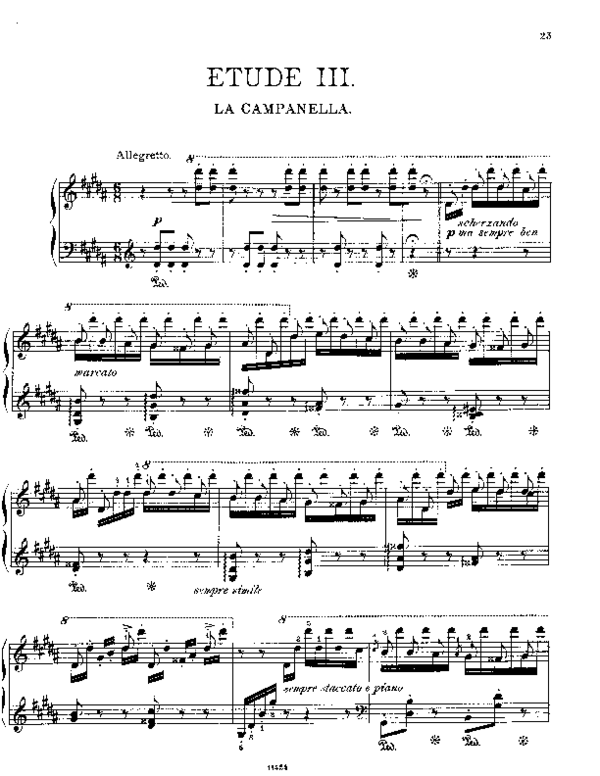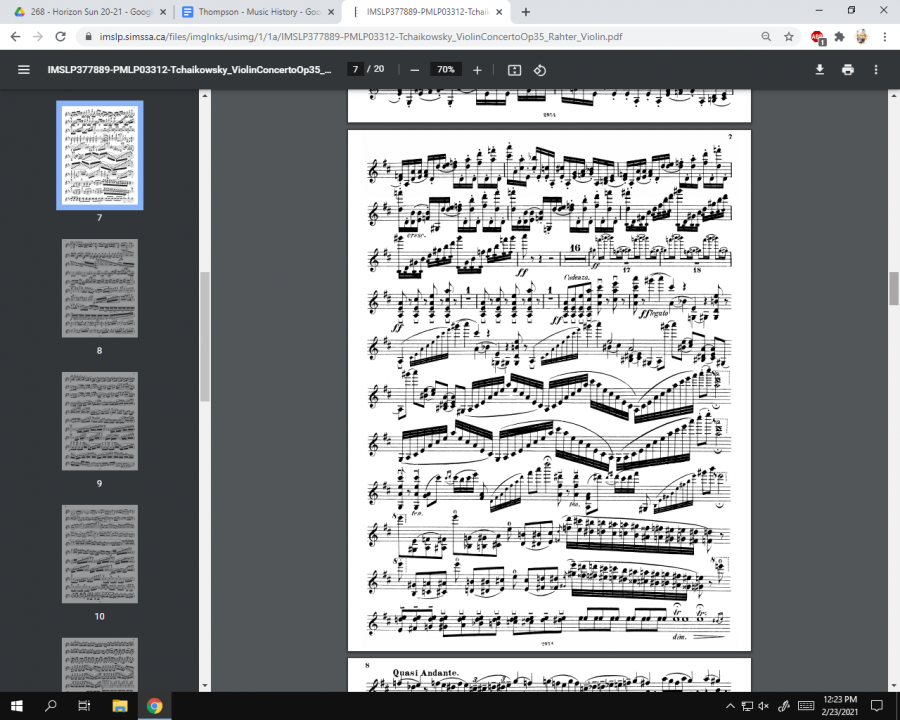The History of Music Notation
Most music that is performed today is from the 1600s or later. But it is a well known fact that humans have been creating music for much longer. How did composers indicate what notes, rhythms, and styles to perform the piece in before modern notation? And how did this evolve into the modern notation and music theory?
Notation on sheet music goes back to the time of ancient Greeks.
March 3, 2021
In music, notation, and music theory, nothing is ever a coincidence. The system of notation and music theory is so complex and thorough that it is baffling that such a system became universal across all of humanity.
Pythagoras was a very important figure in the development of music theory and notation. You may recognize him from the Pythagorean Theorem (a2+b2=c2), but he also did extremely important work in music theory. He noticed that the intervals between notes that sounded good together were mathematical proportions. According to HyperPhysics, some of the most common of these intervals are the octave (2:1 or ½), perfect fifth (3:2), fourth (4:3), major third (5:4), and minor third (6:5). But what do these ratios mean? Pythagoras used an instrument called a monochord. It is a very basic instrument with one string. Pythagoras found that if he took the fundamental pitch (the note the string produces at its full length) and pushed down exactly halfway in the middle of the string, the note produced would exactly half the frequency, otherwise known as an octave. Then, if he pushed down in the middle of that half, the pitch went up by another octave. He was able to hear this because humans have the amazing ability to detect when a pitch goes up by another octave. He found this same pattern with the other ratios listed earlier. He then started to use a modified monochord that had two strings. He found that if the fundamental pitch and the octave were played at the same time, they sounded consonant, or pleasing to the ear. This was also true for the perfect fifth, fourth, major third, and minor third. These would later have a relationship visually on the staff.
According to WQXR, music notation was created collectively over hundreds of years. But one of the most important figures in the development of notation was Guido of Arezzo. He invented the hexachords, which are like scales. He also created a more accurate way to show this on paper. Before Guido, if you were singing you would receive a piece of paper that would have the lyrics and then above the lyrics were lines that showed a direction. These did not show what pitch you were to sing, but rather how the music should feel and the interval of pitches. Guido observed chanters that were having difficulties learning their chants and developed the foundation for all music to come later, the staff. Even if you don’t read music you probably know the staff, it is the group of five horizontal lines that the notes are placed on. He even had a crude form of a key signature.
Guido’s system of notation involved diamond and square shaped notes that looked similar to our current notation system. Classic FM says that from the time of Guido to the 16th century, the notation system did not change much. But then, in the 17th century, music started to become a much bigger part of European culture and started to evolve to almost the same system that we have now. Notes started to become a more round shape like we have now and key signatures became more important. Composers started to understand not just how to write music, but to understand the relationship of chords, melodies, harmonies, and more. This was around the same time as the beginning of a part of musical history called the Baroque era. The Baroque was the end of renaissance-era music and the beginning of the classical music era which, believe it or not, we are still in. It is just not as popular today. The timeline of classical music can be broken into four, distinct eras. The Baroque (1600s), Classical (1700s), Romantic (1800s to early 1900s), and Modern (mid-1900s – today). By the time of Mozart (mid 1700s), the system of music notation and theory was well established. Turns, trills, pralls, grace notes, and more complex chords started to become more common. This was thanks to the clean and simple design of notation that made it easier to add the indicators for ornaments without making the music difficult to read. Then, during the Romantic era, music that had a lot going on and sounded busy started to become more popular. This made having our modern system of notation necessary so that musicians (pianists especially) could still somewhat easily read their music.
Some composers (Liszt, Paganini, and Tchaikovsky especially) wrote music that was difficult to read even with modern notation. Some pieces were so difficult that Paganini and Liszt were accused of selling their soul to the devil for their virtuosity. This emphasizes the need for the clean style of modern notation as shown in this passage from Tchaikovsky’s Violin Concerto in D Major, Opus 35.
Some of the features of modern notation that make reading music a lot easier is the octave markings. These are lines that show a set of notes one or more octaves higher or lower. This is useful if there are a large number of notes that are far above or below the staff, which is confusing to read. In addition to octave markings, key signatures prevent the composers from having to write in every note that is sharp or flat. Instead, they put sharps or flats on the staff at the beginning of each line to indicate those notes are sharp or flat. Another, very important feature of modern notation is articulations. Some basic examples of these include staccato (short), tenuto (smooth and light articulation), and slur (no articulation between notes). Some more advanced articulations start to become more instrument-specific, like tremolo (repeating the same note very fast, mostly for strings), flutter-tonguing (tremolo but for brass and certain woodwinds), spiccato (extremely short, mostly for strings), and pizzicato (plucking the string instead of bowing it). These are just a few examples. There are many, many more articulations that are interpreted differently between different eras, musicians, and instruments.
All in all, over time, music, as well as the way it is written has evolved dramatically. From lines directing pitch changes, to the staff and the many articulations and styles used, all of this had made it easier for composers to show how they piece should feel and easily show many techniques and articulations that can produce very unique sounds.










